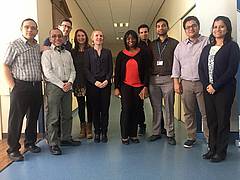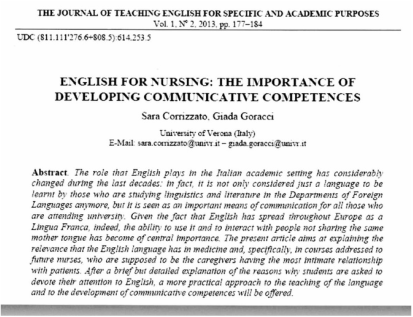
There are many dos and don’ts when delivering bad news. Breaking news over the phone is totally unacceptable, as are comments such as ‘Nothing can be done’. Professionals should avoid using unnecessary medical jargon, or being judgemental and must be careful not to allude to an exact time frame when discussing prognosis. Given the highly sensitive nature of this task, it is comforting to know guidelines exist. SPIKES (Setting, Perception, Invitation, Knowledge, Empathy and Strategy) is a communication framework for breaking bad news used in healthcare settings in the UK. The six stages of the framework guide the medical professional through the maze to ensure bad news is delivered as effectively as possible and in accordance with NHS protocol.
Firstly, finding a setting that offers privacy is essential, as are managing constraints and possible interruptions so that adequate time can be devoted to delivering the news. Open questions such as, ‘What have you been told about your medical situation so far?’ enable doctors to determine the patient’s perception of their condition with the general premise being - ask, don’t tell. Recurrence of cancer suggests the patient may already possess a certain understanding of their situation, but equally this may not be the case. The so-called ‘warning shot’ then prepares the listener for the news they are about to hear, e.g. ‘We’ve found a problem and I want to spend some time talking with you about it.’ Next, the question: How much detail would you like me to go into? invites the patient to indicate the level of detail they wish to receive about their condition. Patients may not be able to assimilate all the information at once, so learners need to interpret responses such as: I can’t really handle knowing all the ins and outs, accept the patient’s right not to know, if indeed this is the case, and then gauge their further interaction accordingly. Aside from avoiding use of terminology and excessive bluntness, (this can and does happen) knowledge about the condition and prognosis should be delivered in manageable chunks and clarification offered periodically throughout the consultation.
Reactions to bad news – denial, sadness, disbelief and anger - differ from patient to patient and are expressed through a variety of emotions, from silence to crying and even nervous laughter. It is important to recognise and address these emotions, validating them with statements like: A lot of people would feel angry right now, and verbalising empathy: I know that this isn’t what you wanted to hear. I wish the news were better. The old adage, it’s not what you say, it’s how you say it, naturally extends to the delivery of bad news and learners therefore should also develop their voice management skills. Patients are far more likely to forgive the odd grammar mistake than an expression of empathy devoid of the appropriate intonation pattern and therefore lacking in warmth and compassion. The final stage of the process is to summarise the salient points of the consultation and check for any misunderstandings before offering a strategy for the future.
Part 2 will appear in October 2015
Firstly, finding a setting that offers privacy is essential, as are managing constraints and possible interruptions so that adequate time can be devoted to delivering the news. Open questions such as, ‘What have you been told about your medical situation so far?’ enable doctors to determine the patient’s perception of their condition with the general premise being - ask, don’t tell. Recurrence of cancer suggests the patient may already possess a certain understanding of their situation, but equally this may not be the case. The so-called ‘warning shot’ then prepares the listener for the news they are about to hear, e.g. ‘We’ve found a problem and I want to spend some time talking with you about it.’ Next, the question: How much detail would you like me to go into? invites the patient to indicate the level of detail they wish to receive about their condition. Patients may not be able to assimilate all the information at once, so learners need to interpret responses such as: I can’t really handle knowing all the ins and outs, accept the patient’s right not to know, if indeed this is the case, and then gauge their further interaction accordingly. Aside from avoiding use of terminology and excessive bluntness, (this can and does happen) knowledge about the condition and prognosis should be delivered in manageable chunks and clarification offered periodically throughout the consultation.
Reactions to bad news – denial, sadness, disbelief and anger - differ from patient to patient and are expressed through a variety of emotions, from silence to crying and even nervous laughter. It is important to recognise and address these emotions, validating them with statements like: A lot of people would feel angry right now, and verbalising empathy: I know that this isn’t what you wanted to hear. I wish the news were better. The old adage, it’s not what you say, it’s how you say it, naturally extends to the delivery of bad news and learners therefore should also develop their voice management skills. Patients are far more likely to forgive the odd grammar mistake than an expression of empathy devoid of the appropriate intonation pattern and therefore lacking in warmth and compassion. The final stage of the process is to summarise the salient points of the consultation and check for any misunderstandings before offering a strategy for the future.
Part 2 will appear in October 2015







 RSS Feed
RSS Feed